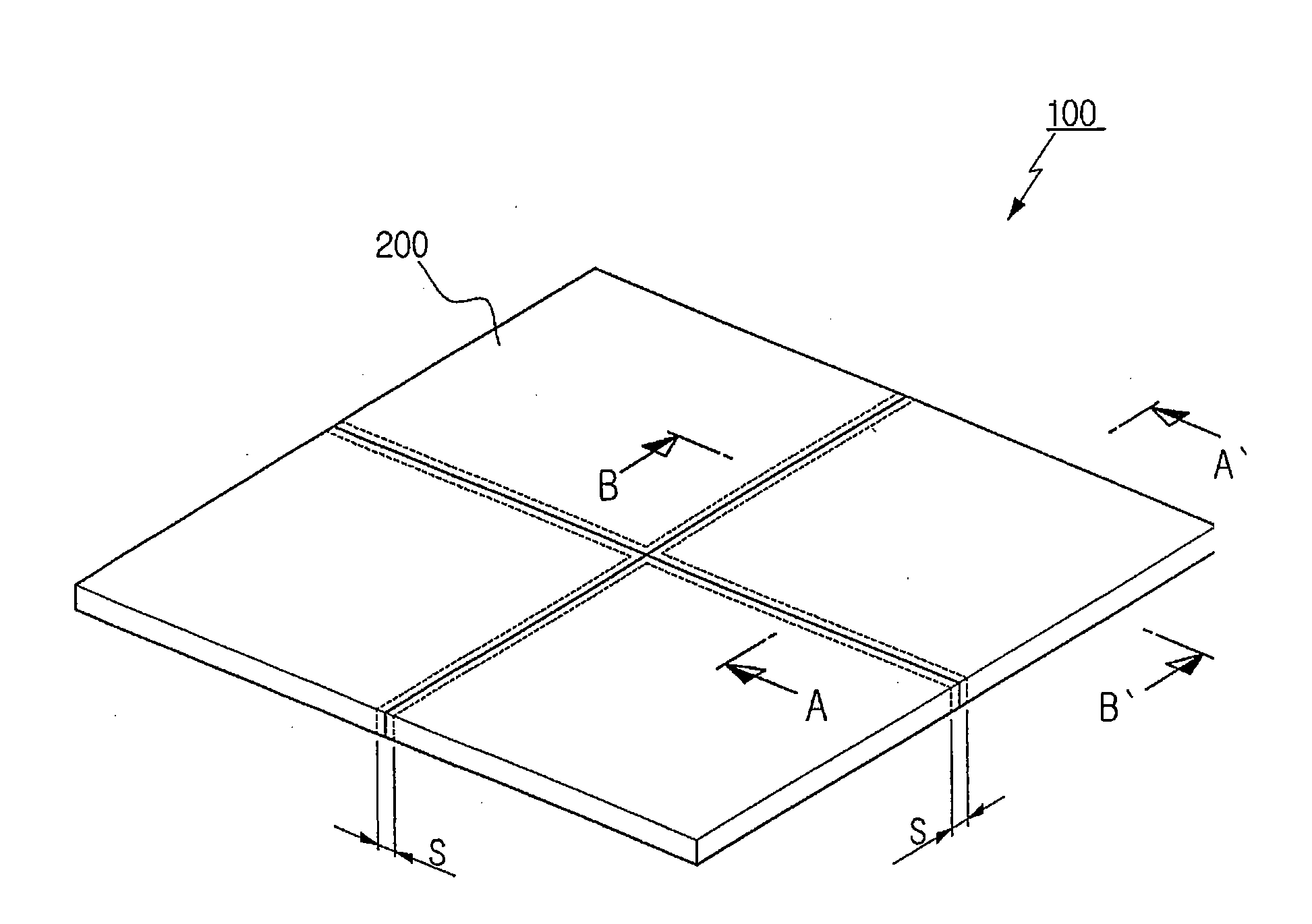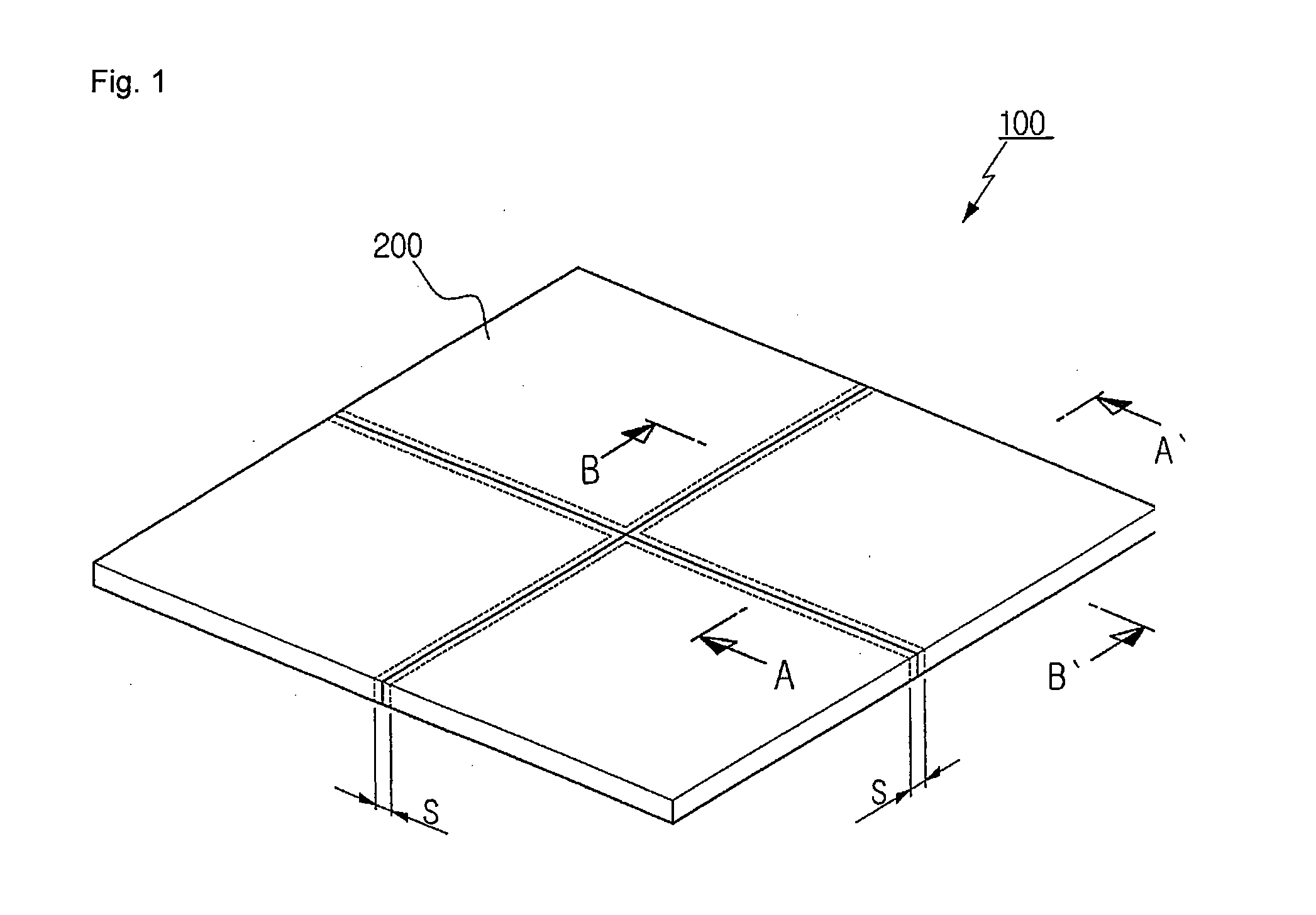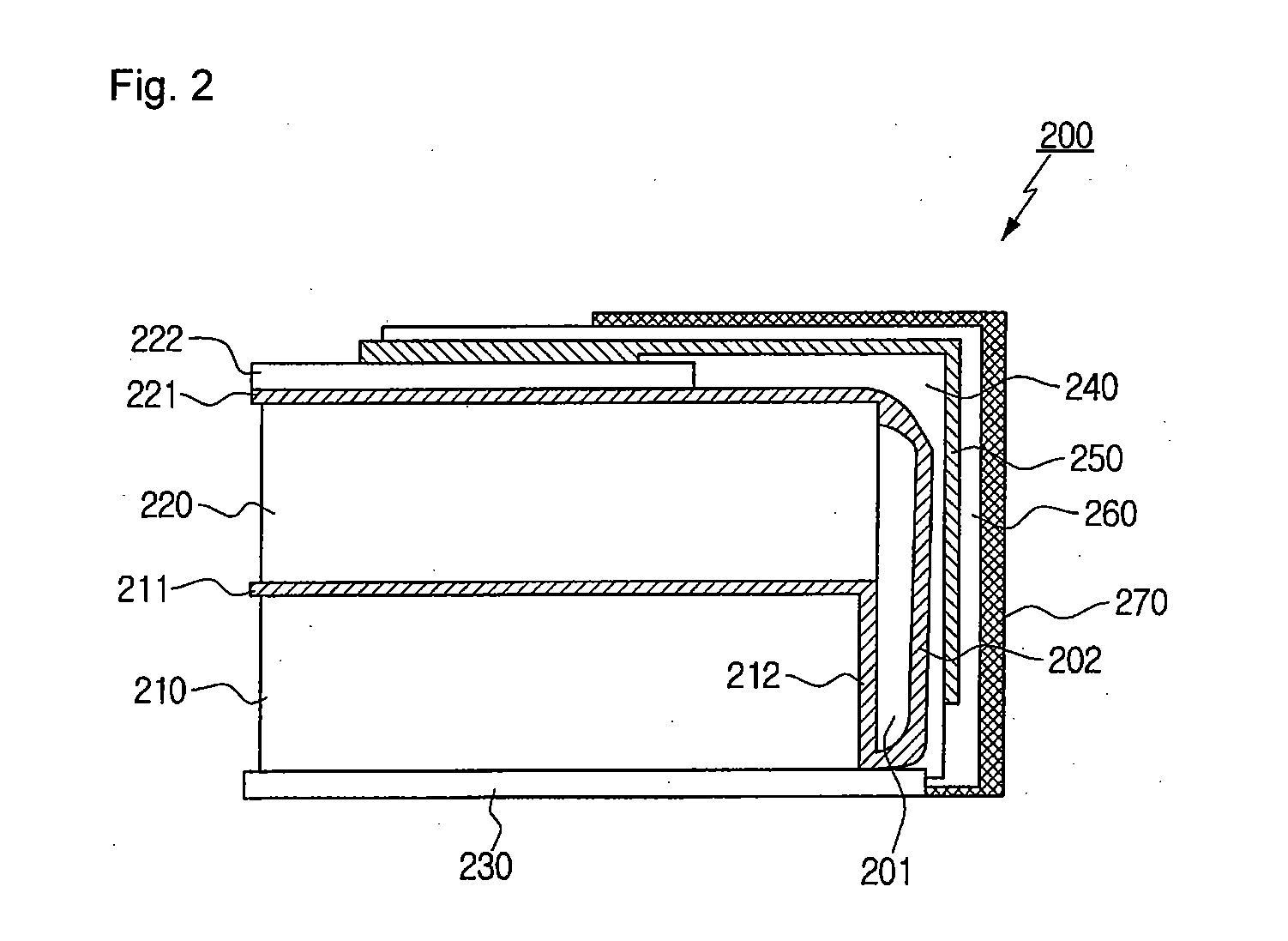Plasma display panel for multi-screen and fabricating method for the same
- Summary
- Abstract
- Description
- Claims
- Application Information
AI Technical Summary
Benefits of technology
Problems solved by technology
Method used
Image
Examples
Embodiment Construction
[0018]Hereinafter, a PDP and a method of fabricating the same, according to embodiments of the present invention, will be described in detail with reference to the accompanying drawings.
[0019]FIG. 1 is a perspective view of a PDP according to an embodiment of the present invention, and FIGS. 2 and 3 are cross-sectional views of a PDP taken along lines A-A′ and B-B′ of FIG. 1, respectively.
[0020]As shown in FIG. 1, the PDP 100 according to an embodiment of the present invention is configured by assembling a plurality of unit PDPs 200. As the plurality of unit PDPs 200 are assembled, a seam area S exists at the joint portion of the unit PDPs.
[0021]The configuration of the unit PDP 200 will be described below. As shown in FIGS. 2 and 3, the unit PDP 200 basically has a configuration in which a front plate 210 and a rear substrate 220 are sequentially stacked and laminated together. Although not shown in these figures, through a preparation process, a scan electrode, a sustain electrode...
PUM
 Login to View More
Login to View More Abstract
Description
Claims
Application Information
 Login to View More
Login to View More - R&D
- Intellectual Property
- Life Sciences
- Materials
- Tech Scout
- Unparalleled Data Quality
- Higher Quality Content
- 60% Fewer Hallucinations
Browse by: Latest US Patents, China's latest patents, Technical Efficacy Thesaurus, Application Domain, Technology Topic, Popular Technical Reports.
© 2025 PatSnap. All rights reserved.Legal|Privacy policy|Modern Slavery Act Transparency Statement|Sitemap|About US| Contact US: help@patsnap.com



